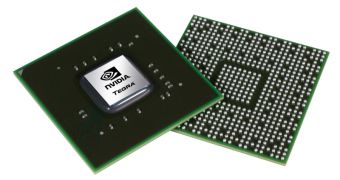During the 2011 Consumer Electronics Show, some rumors started to surface stating that Nvidia is having yield issues with its Tegra 2 SoC, but the Santa Clara based company is quick to dismiss these allegations, claiming that its chip doesn't have such problems.
This latest development in the Tegra 2 story comes from Fudzilla, the same website that implied a while back that Nvidia and TSMC are having yield issues with the chip.
In addition to the company's official response, market availability of Tegra 2 devices also seems to dismiss Fudzilla's original allegation.
The Tegra 2 is a second generation Nvidia chip, that is designed to be used in smartphones, tablets, and other low-power mobile devices, recent reports claiming that Google chose it as the reference platform for the Android 3.0 (Honeycomb) operating system.
As most other mobile SoCs, the Tegra 2 is based on the ARM architecture and features dual Cortex A9 cores, which can be clocked as high as 1GHz, a GeForce ULP (Ultra Low Power) GPU, and an LPDDR2 memory interface.
According to Nvidia, Tegra 2 is capable of 1080p H.264, VC-1, and MPEG-4 video decode as well as 1080p H.264 video encode and supports dual display outputs.
When compared to the PowerVR SGX 540 GPU, that is found inside Samsung's Hummingbird SoC, Nvidia's chip proved itself to be in average about 20% faster.
At this time, a wide series of companies already deliver, or plan to release, Tegra 2 devices.
Motorola and LG are two of those, both of them preparing to ship phones and tablets based on this SoC later this quarter, while Point of View is shipping its Tegra 2 tablets across Europe (in Nordic countries and Holland).
In addition, Toshiba has already got its first batch of Folio 100 tablets out last week.

 14 DAY TRIAL //
14 DAY TRIAL //